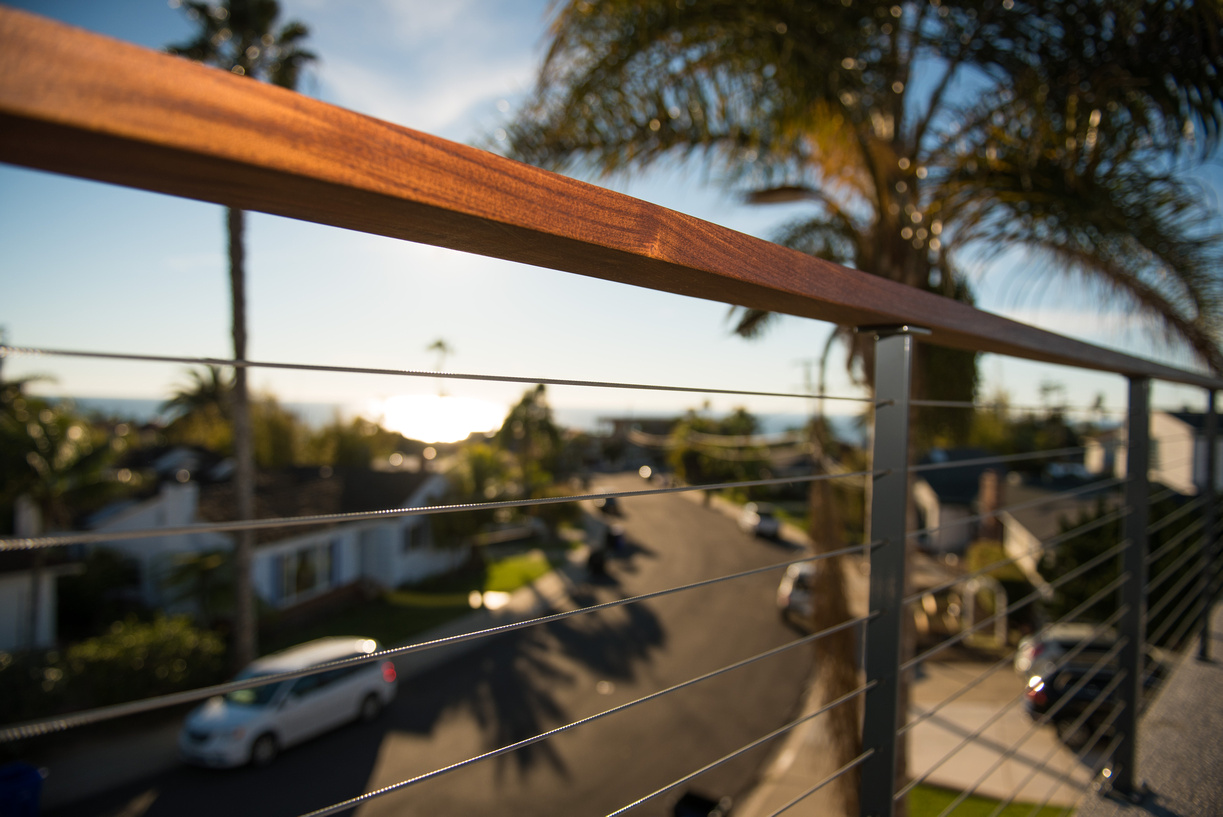If you are planning to build a deck you might be wondering about the best height for deck railings in your area. What about ground level and low level decks? Do you need to construct railings at all? In this post we will review valuable information and these common questions about safe deck railing height. The post also contains information about utilizing deck standards, and how to determine what parameters might work for your project.
From a legal standpoint different municipalities will require different guidelines however quite consistently we are referring to the height and spacing requirements for code considerations when dealing with residential deck projects.
SAMPLE DECK RAILING STANDARD DRAWING:

Using Municipal “Standards” to Calculate Railing Height
One quick and accurate way to start the deck design process is to locate the ” deck building standards” for your area. Standards are often used in lieu of engineering and can streamline the permitted building process. When dealing with deck standards we are usually referring to some common factors that might include:
- Footing size and depth
- Joist and beam or girder sizing
- Railing type, height, spacing, and lateral loading requirements
By following a city standard design document we can eliminate certain variables and construct something that falls within the standards to bypass engineering or possible delays with building departments. Typically if a design doesn’t satisfy standard requirements an engineer will be needed to provide calculations for callouts that do not meet the standard requirements. An example of a common requirement that would require an engineer for deck design: The desire to span a beam of any size further than 10 feet. This span does not fall within the standard requirement and therefore requires an engineered calculation to prove safety and stability.

Standard Railing Heights by Area
Building codes for single family residences often refer to the “IRC” or International Residential Code. This is a set of simple guidelines used to protect public safety and the requirement for railings is enforced on decks above 30″ from grade. In most states and many other places the residential guardrail height is 36″ high minimum. In California the minimum requirement is actually 42″ height.
How do I calculate railing height? – railing height is calculated by measuring from the deck surface to the top of the rail.
When pre planning or dealing with different decking substrates like tile, texture deck, composites, etc. it is important to facto in the thickness of the substrate into the railing height. Additionally, if you plan to recess railing posts inside the deck or utilize a pre-made railing package these factors will affect the overall railing height. Pre-made railing systems like these are an excellent choice for residential decks.

Deck Railing Spacing Requirements
Balusters, pipes, cables, panels or any other form of infill for your deck railing must follow specific guidelines in addition to the height requirements. Almost universally there is a maximum spacing of 4″ allowed in between balusters or solid members. Infill options like stainless cables follow a tighter guideline of 3″ spacing not to exceed 4″ upon deflection. The main reason for this spacing requirement is to prevent babies and small children from forcing their way through the railing infill.
San Diego Cable Railings produces a solid and attractive collection of railing systems for both DIY and professional clientele in 50 states. Our products have passed countless inspections and our preferred installers have successfully completed thousands of projects since 2009. If you have questions about the best height for deck railings in your area, or would like to obtain a quote for deck railings please give us a call or visit the quote request page for pricing.



